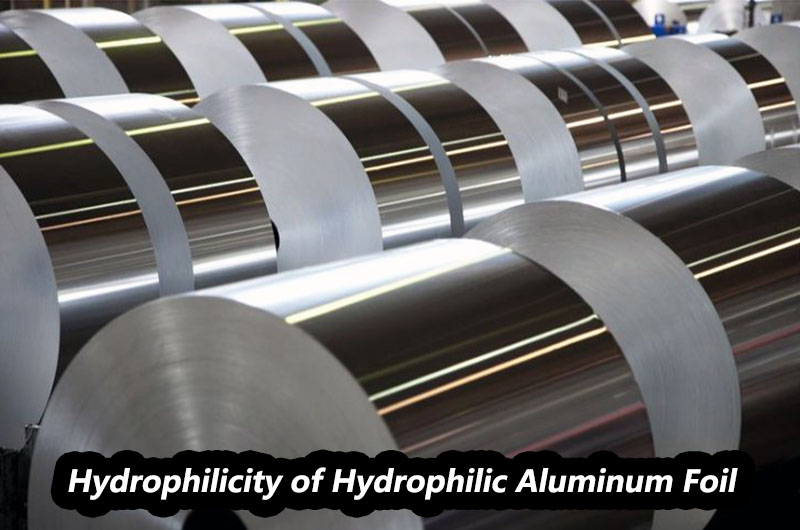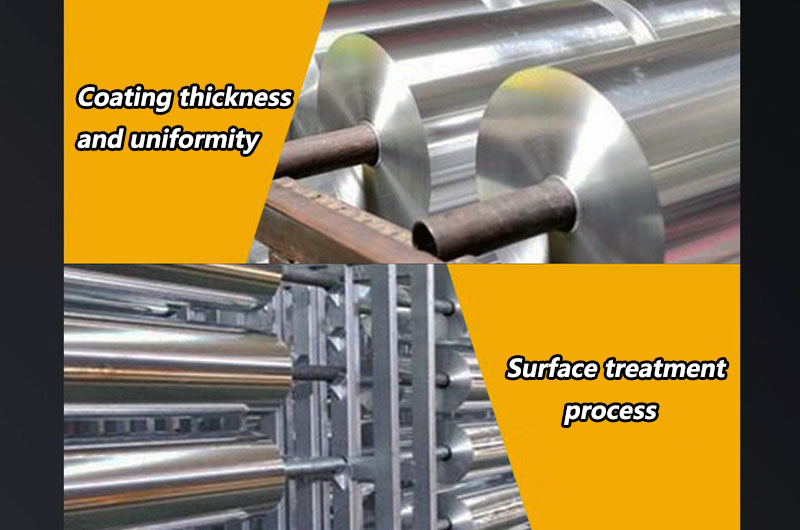- Understanding hydrophilicity
- Factors affecting hydrophilicity
- Impact on air conditioning efficiency
- Controlling Hydrophilicity Considerations
- Conclusion
In the intricate field of air conditioning technology, the hydrophilicity of aluminum foil has become a key factor affecting the efficiency and performance of heat exchangers. Hydrophilic aluminum foil has unique water-absorbing properties and plays a key role in promoting optimal heat transfer within air conditioning systems.
Understanding hydrophilicity
Definition: Hydrophilicity refers to a material’s affinity for water, and in the case of aluminum foil, it means the foil’s ability to attract, spread, and promote the formation of a thin film of water on its surface.
Importance in air conditioning: The hydrophilic properties of aluminum foil are crucial for improving heat transfer efficiency within air conditioning systems, helping to improve cooling performance.

Factors affecting hydrophilicity
1. Surface treatment process
Chemical Treatment: The type and composition of chemicals used in the hydrophilic coating process significantly affects the foil's ability to absorb water.
Application Technique: The method of applying a hydrophilic coating, whether by dipping, spraying or other techniques, will affect the uniformity and effectiveness of the coating.
2. Coating thickness and uniformity
Optimum thickness: The thickness of the hydrophilic coating must be carefully controlled to ensure optimal water interaction without hampering the other properties of the foil.
Uniform Application: Ensuring a consistent and even coating over the entire surface of the foil is critical to achieving reliable hydrophilic performance.
3. Surface topography and roughness
Changes in microstructure: Changes in surface morphology, including microtexture and roughness, can affect the foil's ability to attract and retain water molecules.
Effect on water film formation: Surface roughness affects the formation of continuous water film, thereby affecting heat transfer efficiency.
4. Chemical composition of aluminum alloy
Alloy Selection: Different aluminum alloys may respond differently to hydrophilic treatments. Alloy composition affects the effectiveness and durability of hydrophilic properties.
Corrosion resistance: The chemical composition of the alloy may also affect the foil's corrosion resistance, which is a key factor in the longevity of the air conditioning system.
5. Temperature and environmental conditions
Effect of temperature: The operating temperature during the coating process and subsequently when using air conditioning systems affects the hydrophilic behavior of the foil.
Environmental factors: Over time, the surrounding environment, including humidity levels and exposure to external elements, may affect the hydrophilic properties of the foil.

Impact on air conditioning efficiency
1. Heat transfer efficiency
Enhanced cooling performance: Highly hydrophilic aluminum foil promotes optimal heat transfer by promoting even distribution of water, ensuring efficient cooling within the heat exchanger.
Role in Evaporator Coils: Hydrophilic properties are particularly important in the design of evaporator coils, where the phase change of water significantly affects overall efficiency.
2. Prevent water droplets from forming
Uniform Water Film: Hydrophilic aluminum foil minimizes the formation of surface water droplets, preventing potential problems such as uneven cooling and water hammer.
Improved dehumidification: The water-absorbent properties of the foil contribute to effective dehumidification, an integral aspect of air conditioning performance.
Controlling Hydrophilicity Considerations
1. Durability and longevity
Impact of environmental factors: Harsh environmental conditions may challenge the long-term durability of hydrophilic coatings, necessitating continued research into more resilient formulations.
Corrosion Resistance: Balancing hydrophilicity and corrosion resistance remains a challenge, especially in applications exposed to corrosive elements.
2. Manufacturing consistency
Quality Control: Ensuring consistent hydrophilic properties from batch to batch requires strict quality control measures during the manufacturing process.
Standardization: The industry could benefit from standardized testing methods to evaluate and compare the hydrophilic properties of different aluminum foils.
Conclusion
The hydrophilicity of aluminum foil is a dynamic, multifaceted aspect that significantly affects the performance of air conditioning systems. Understanding the factors that influence hydrophilicity, from surface treatment to environmental conditions, can optimize foil performance.
As air conditioning technology continues to evolve, the pursuit of enhanced hydrophilic aluminum foil continues to drive innovation aimed at achieving a delicate balance between efficiency, durability and environmental sustainability. Ultimately, it is the mastery of these factors that ensures foils make their optimal contribution to the efficiency and effectiveness of air conditioning systems worldwide.
Informations you may be interested in:
- Which is better, hydrophilic aluminum foil or copper foil for air conditioners
- Hydrophilic aluminum foil vs non-hydrophilic aluminum foil
- Solutions to hydrophilic aluminum foil problems
- What is Hydrophilic Aluminum Foil?
- Hydrophilic aluminum foil performance indicators
- What components in air conditioning systems use aluminum foil?
- How is aluminum foil used for thermal insulation in air conditioning systems?
- Can aluminum foil be used in outdoor air conditioning units?
- Comprehensive analysis of air conditioning aluminum foil: classification and applications
- What kind of material is air conditioning aluminum foil made of and what are its


